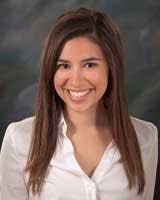The top 7 mistakes of high-performing dental practices: Part 2
I travel to offices all over the country, and — without fail — at each office, the dentist will tell me that he or she hasn’t visited more than three other practices! That’s a problem, because you don’t have anything to compare your practice or systems to. How do you know if you are doing something right if you don’t know what other dentists are doing?
In this three-part series, we are looking at the top seven mistakes high-performing practices make. Last month, we talked about the first two …
1. Most dentists are unaware of their numbers.
2. If you do not have a person who is dedicated to recall your office, you are missing out on a huge opportunity.
Now let’s look at the next mistake …
3. You all love your equipment. Everything is NEW! It’s beautiful, but NEW is expensive.
I was in an office where they had invested almost $400,000 in their build-out, and then they bought a $40,000 laser. Nice doesn’t always have to be expensive. Before you buy, check online (ebay.com, dentalplanet.com, dentalequipmentliquidators.com), because sometimes you can get a great deal on an older model or a lightly used model.
If you are looking at a brand new piece of equipment, wait six months and look for it on eBay. If there are lots of listings for that piece of equipment, chances are it is not something that you want to invest in.
4. Intraoral cameras are the most underutilized instruments in the entire office.
Every office I have been in has had an intraoral camera, but I have only seen two offices that actually use them. Some people say a picture is worth a thousand words. We find that a picture is sometimes worth a crown and a core buildup.
Not sure how to implement this? We weren’t either, so we made it part of our protocol. In our office, the doctor does not touch the drill to the tooth until a picture is taken. We take a picture to protect ourselves if the insurance company has a question, and to show the patient what was done today as well as to use in our marketing.
5. High overhead — most of the offices I see have overhead over 65%.
The largest percentage of your overhead will come from your staff salaries, but we usually find that second is facility fees. The office I mentioned earlier, with the $400,000 build-out, paid $7,800 per month in rent and another $7,200 to the bank for their note. You don’t have to build the Taj Mahal to have a nice office. I’ve seen plenty of offices with used equipment and Home Depot or IKEA cabinets that have been very lovely.
Another way that offices add to their overhead is from their supply costs. Shop around and set a budget each month for whoever does your ordering.
I’ve spent a lot of time working with The Profitable Dentist’s Dr. Woody Oakes, and his cardinal rule is that it is easier to save money than it is to make more money. If you can get your overhead around 50% to 55%, you can immediately increase what you take home.
We find that the offices with very high overhead often know that they have high expenses, but they don’t know where these expenses are coming from. The first step is to get your expense report from your accountant or from your Quicken or other software. Once you know where your money is going, you can better manage the situation. All budgeting entails is telling your money where you want it to go.
As I mentioned before, staff salaries are generally the largest expense. This is good because your best return on your investment is from your personnel, but many offices are overstaffed. There are a few ways to determine if you have the right number of people. The best way to determine this is from this formula:
$20,000 x # of employees (not counting the doctors) = $XXXXXXX
$25,000 x # of operatories = $XXXXXXX
Add up these numbers and divide by 2. That will give you your potential production based on your office and your staff.
I was working with an office in California that told me that they had 27 employees. When I visited the office, I discovered that they actually had 41 employees. This was a large office, but they certainly didn’t need 41 employees working full time. However, they did have certain times throughout the week when they needed their full staff. I restructured their working schedule so that their full staff was working on an as-needed basis. This situation, while extreme, is something that I see frequently, because there are certain times of the day or week when you need your full staff. During those times, you may need an extra body in the office, but be mindful that you do not schedule your full staff all the time if it is not appropriate. This will help tremendously with your overhead. My California office was able to cut their staffing budget by 25% without letting go of any of their team members.
Stay tuned for the last two mistakes next month.
ADDITIONAL RELATED ARTICLES …
100 more tips from 100 practice management experts in 100 words or less
100 tips from 100 practice management experts in 100 words or less

